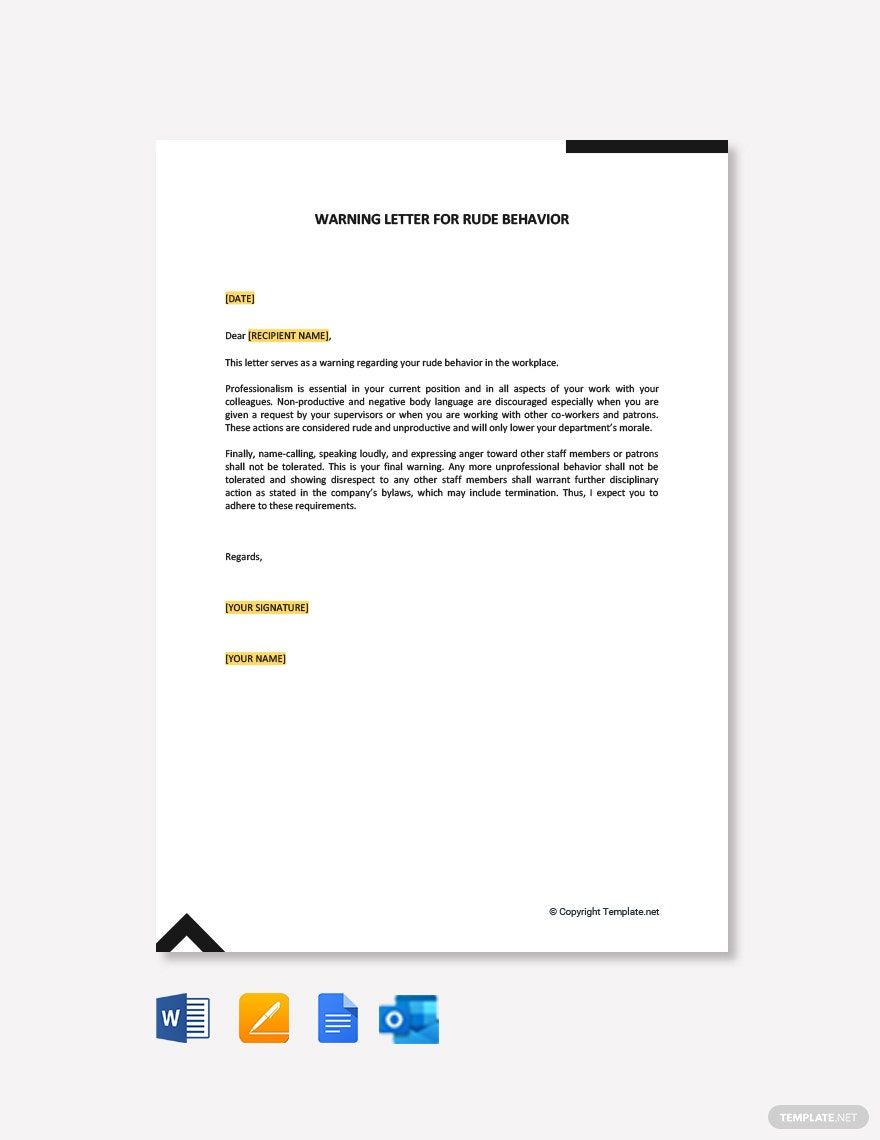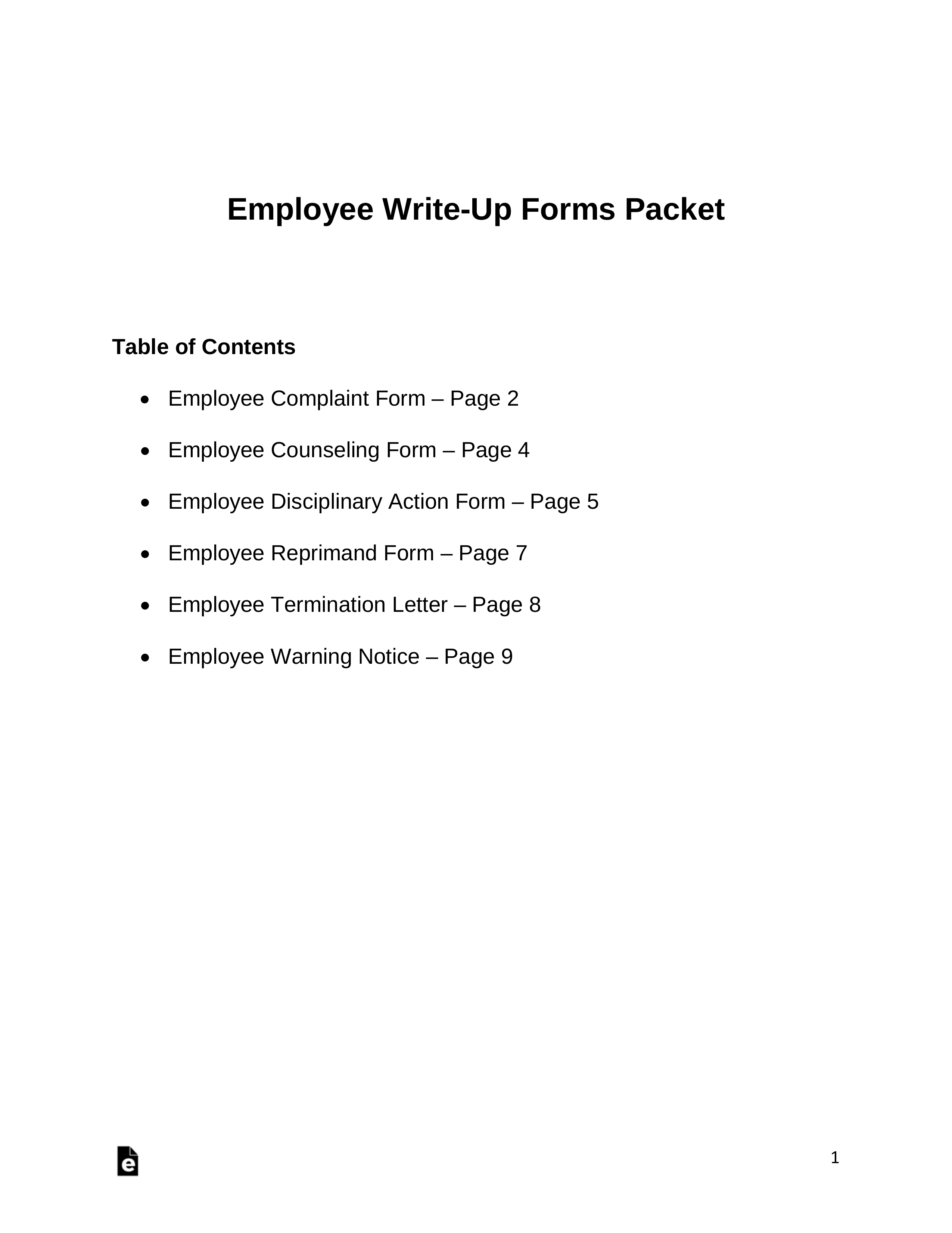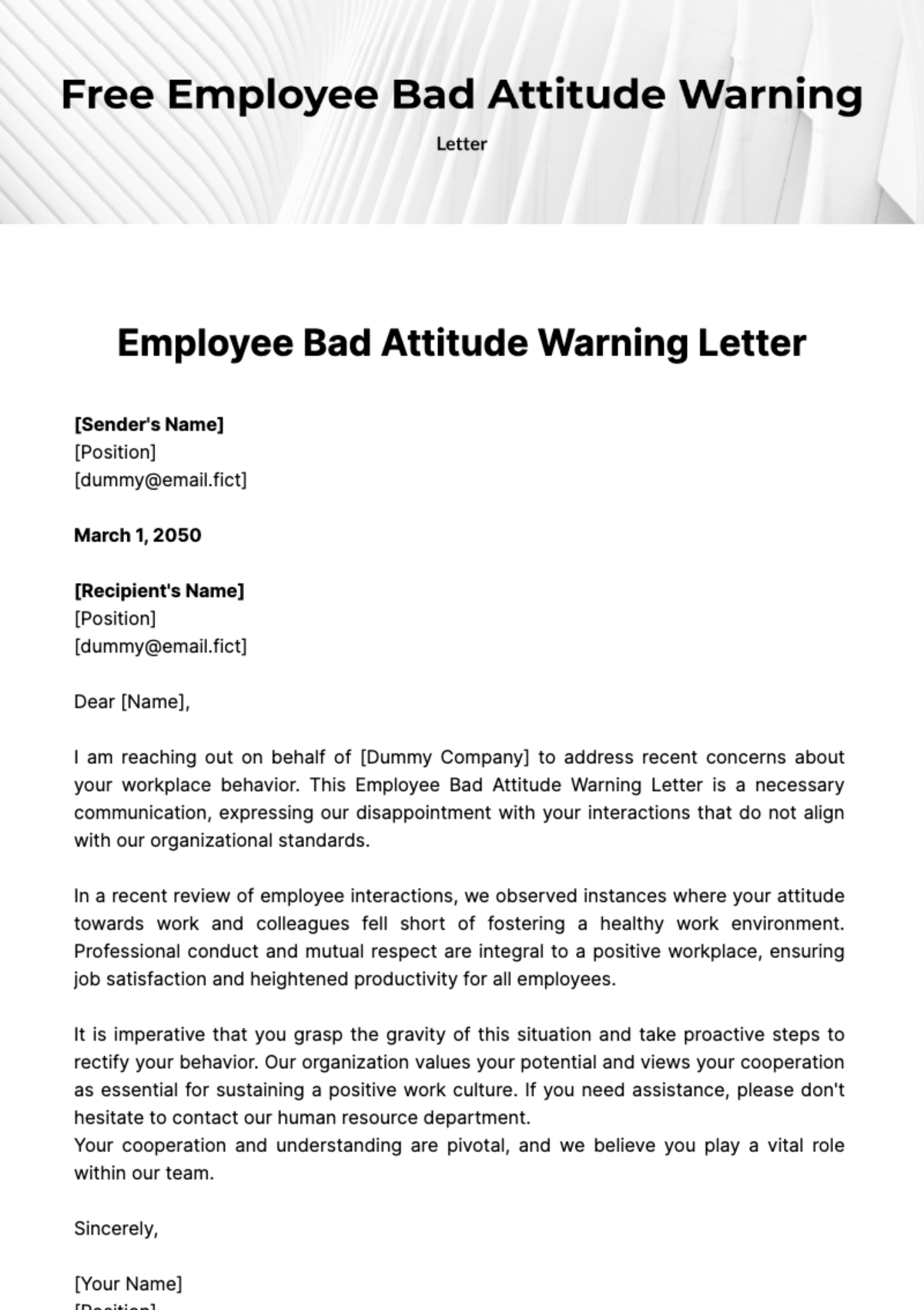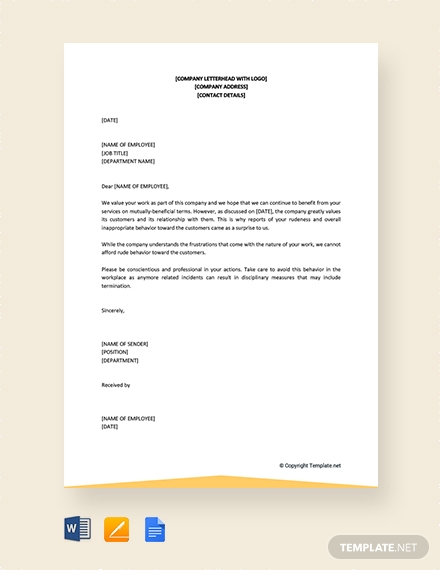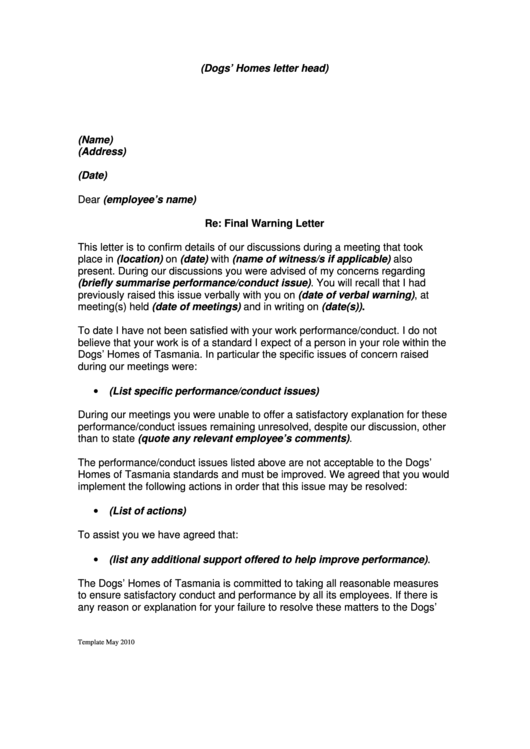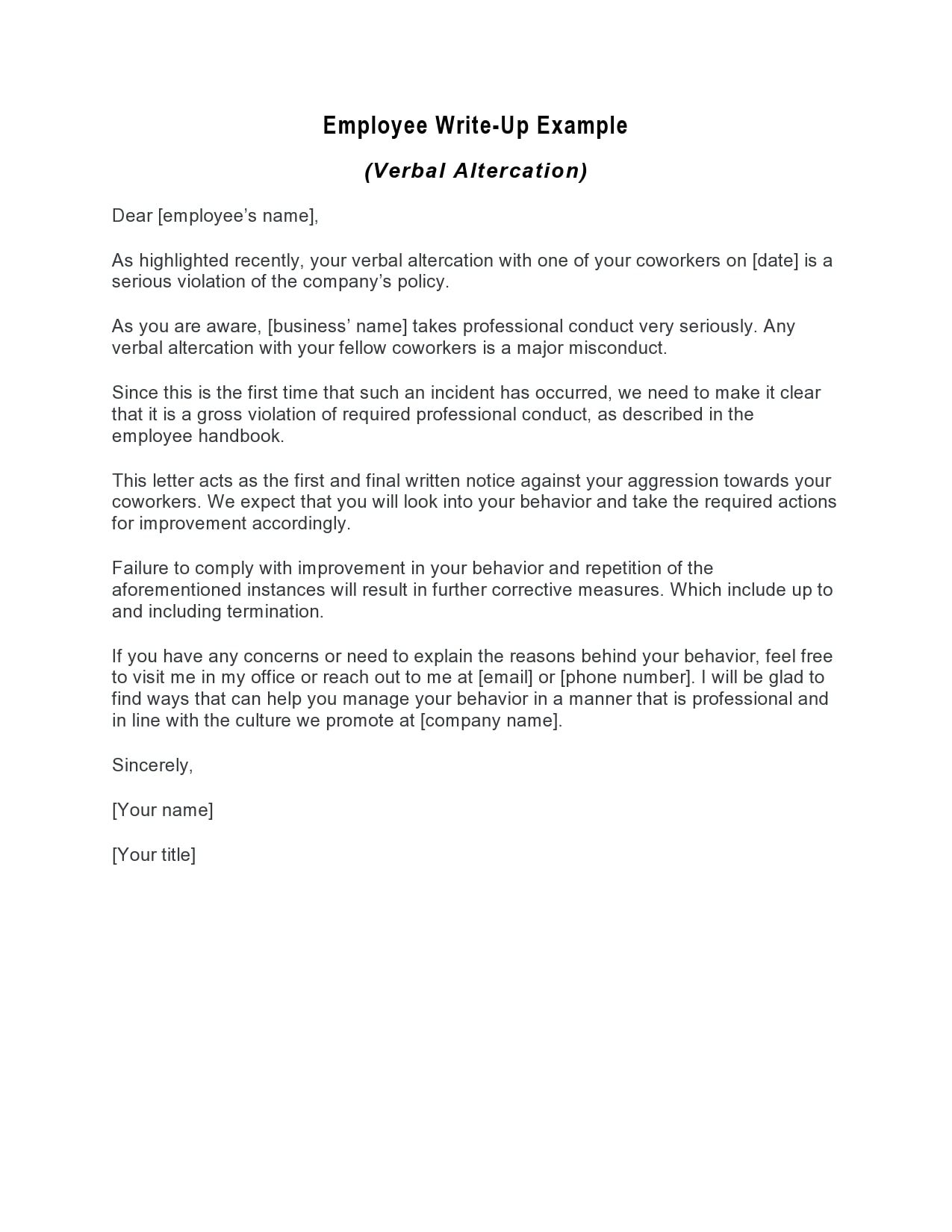How To Write Someone Up For Bad Attitude
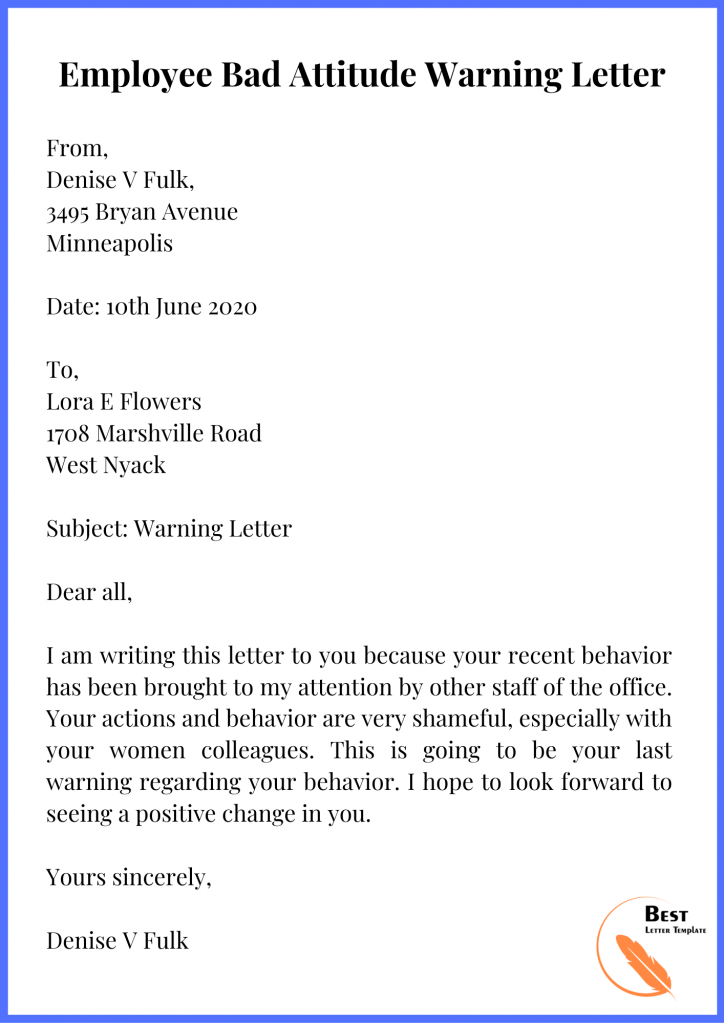
The fluorescent lights hummed a monotonous tune above Sarah’s head as she stared at the blank document on her screen. Outside, the late afternoon sun cast long shadows, but inside, the atmosphere felt heavy, laden with unspoken tension. She needed to address the elephant in the room – the persistent negativity radiating from a key member of her team, a negativity that was slowly poisoning the work environment.
Writing someone up for a bad attitude is never easy, but it's a crucial skill for any manager aiming to cultivate a positive and productive workplace. This isn't about punishing personality; it’s about addressing behaviors that negatively impact team dynamics and overall performance.
Understanding the Root Cause
Before even considering a formal write-up, it's essential to understand what's driving the negative attitude. Have there been recent changes in the company? Is the employee struggling with a personal issue impacting their work?
Open communication is key.
A private, empathetic conversation can often uncover underlying issues and offer opportunities for support or resolution. Sometimes, a simple misunderstanding or a feeling of being unheard can manifest as negativity.
Documenting Specific Behaviors
If the initial conversation doesn't yield positive change, then formal documentation becomes necessary. Avoid vague generalizations like "always negative." Instead, focus on specific, observable behaviors.
For example, instead of saying "John is always complaining," document "On October 26th, John made several disparaging remarks during the team meeting regarding the new project proposal, stating 'It's a waste of time' and 'It'll never work'."
Include the date, time, location, and who witnessed the behavior.
The Importance of a Clear Policy
Your company’s policies on conduct and performance should be clearly defined and readily accessible to all employees. This ensures transparency and fairness in the disciplinary process. A well-defined policy provides a framework for addressing unacceptable behaviors and outlining the consequences of repeated violations.
Crafting the Write-Up
The write-up itself should be objective, factual, and professional. Start by stating the purpose of the document and outlining the specific behaviors that need to be addressed.
Clearly explain how these behaviors violate company policy or negatively impact the team.
Outline the expected changes in behavior and provide resources or support that are available to help the employee improve. Finally, state the consequences of failing to meet these expectations.
Sample Phrases for Addressing Attitude Issues:
"Consistently makes negative comments during team meetings."
"Expresses dissatisfaction with assignments in a manner that discourages other team members."
"Refuses to participate constructively in brainstorming sessions."
Delivering the Write-Up
Schedule a private meeting with the employee to discuss the write-up. Remain calm, respectful, and professional throughout the conversation. Focus on the behaviors, not the person.
Allow the employee to respond and ask questions. Document the discussion and any agreements made.
According to SHRM (Society for Human Resource Management), providing employees with an opportunity to respond to performance concerns is crucial for fostering a culture of open communication and accountability.
Following Up and Providing Support
A write-up isn't a punishment; it's a tool for improvement. Schedule regular follow-up meetings to check in on the employee's progress and provide ongoing support. Offer coaching, mentoring, or training opportunities to help them develop more positive and productive behaviors.
Knowing When to Let Go
Despite your best efforts, some employees may be unable or unwilling to change their behaviors. If the negativity persists and continues to negatively impact the team, you may need to consider further disciplinary action, up to and including termination.
This decision should never be taken lightly and should always be made in consultation with HR and legal counsel.
Sometimes, the most compassionate decision for both the individual and the team is to part ways.
A Reflective Conclusion
Writing someone up for a bad attitude is a difficult task, but it's an essential part of leadership. It requires empathy, objectivity, and a commitment to creating a positive and productive work environment. By addressing negative behaviors proactively and providing support for improvement, you can help your team thrive and achieve its full potential.
Remember, a healthy workplace is a shared responsibility, and addressing negativity is a crucial step in fostering a culture of collaboration, respect, and success.
Sarah sighed, took a deep breath, and began to type, her fingers moving with a newfound sense of purpose.
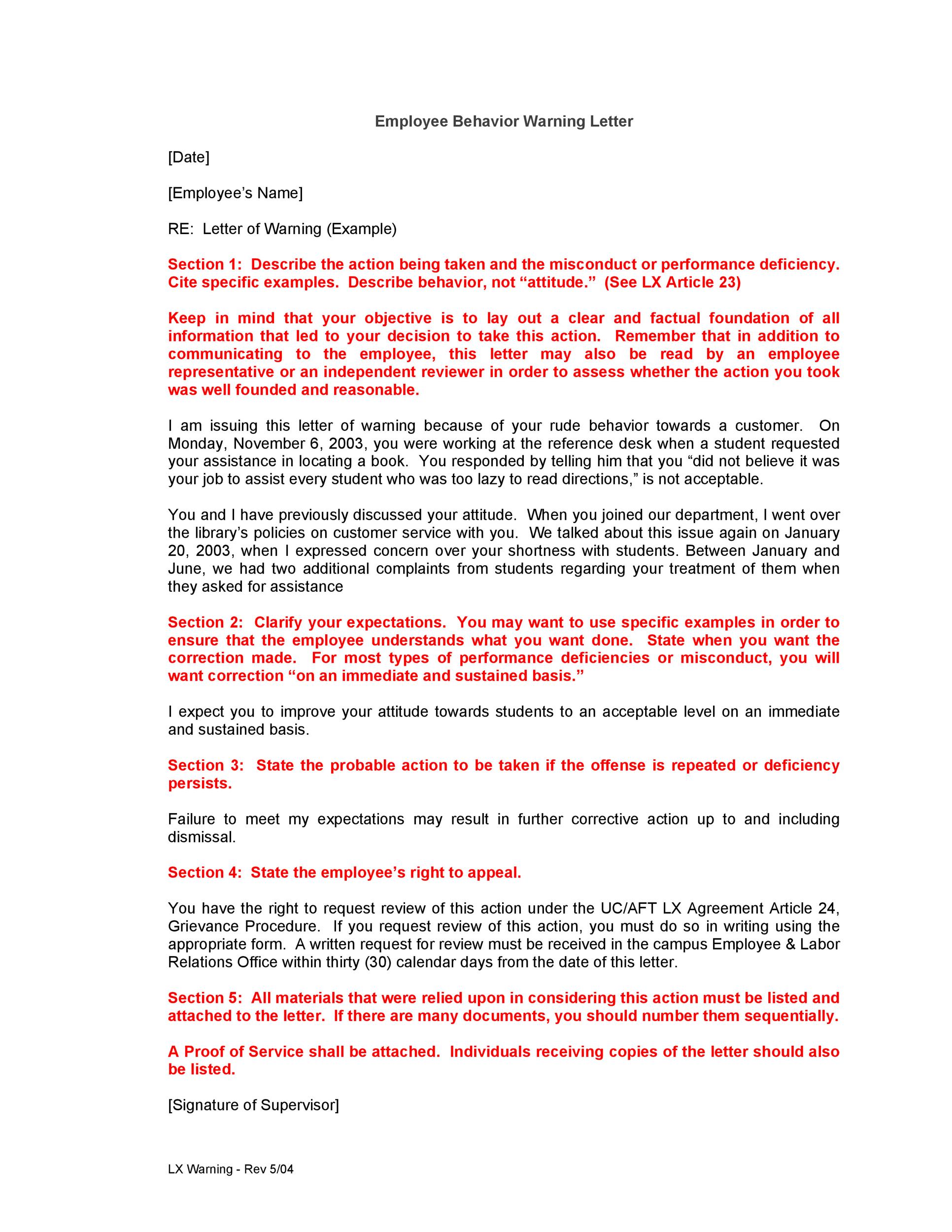
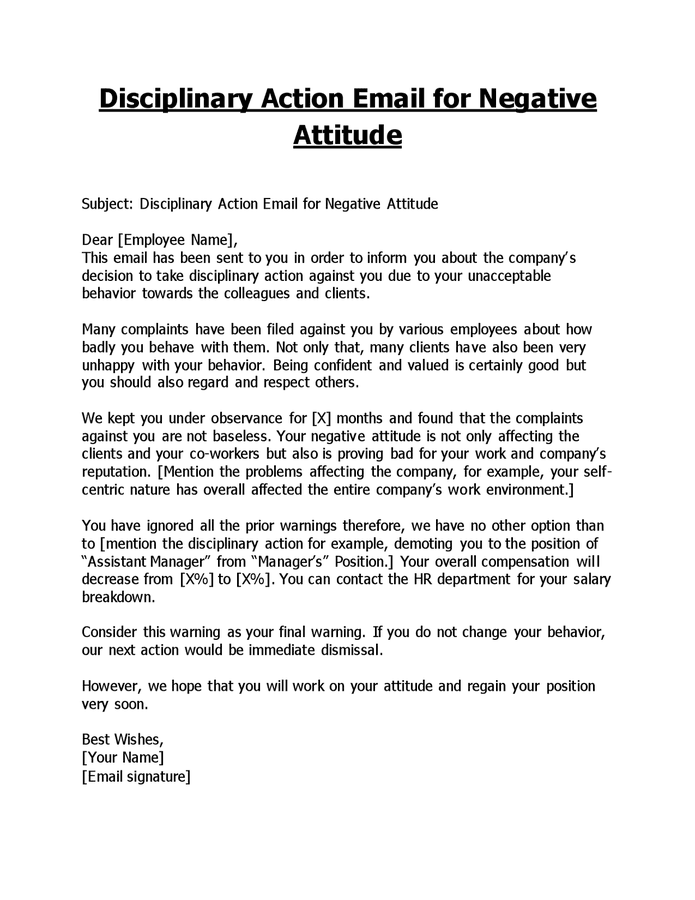

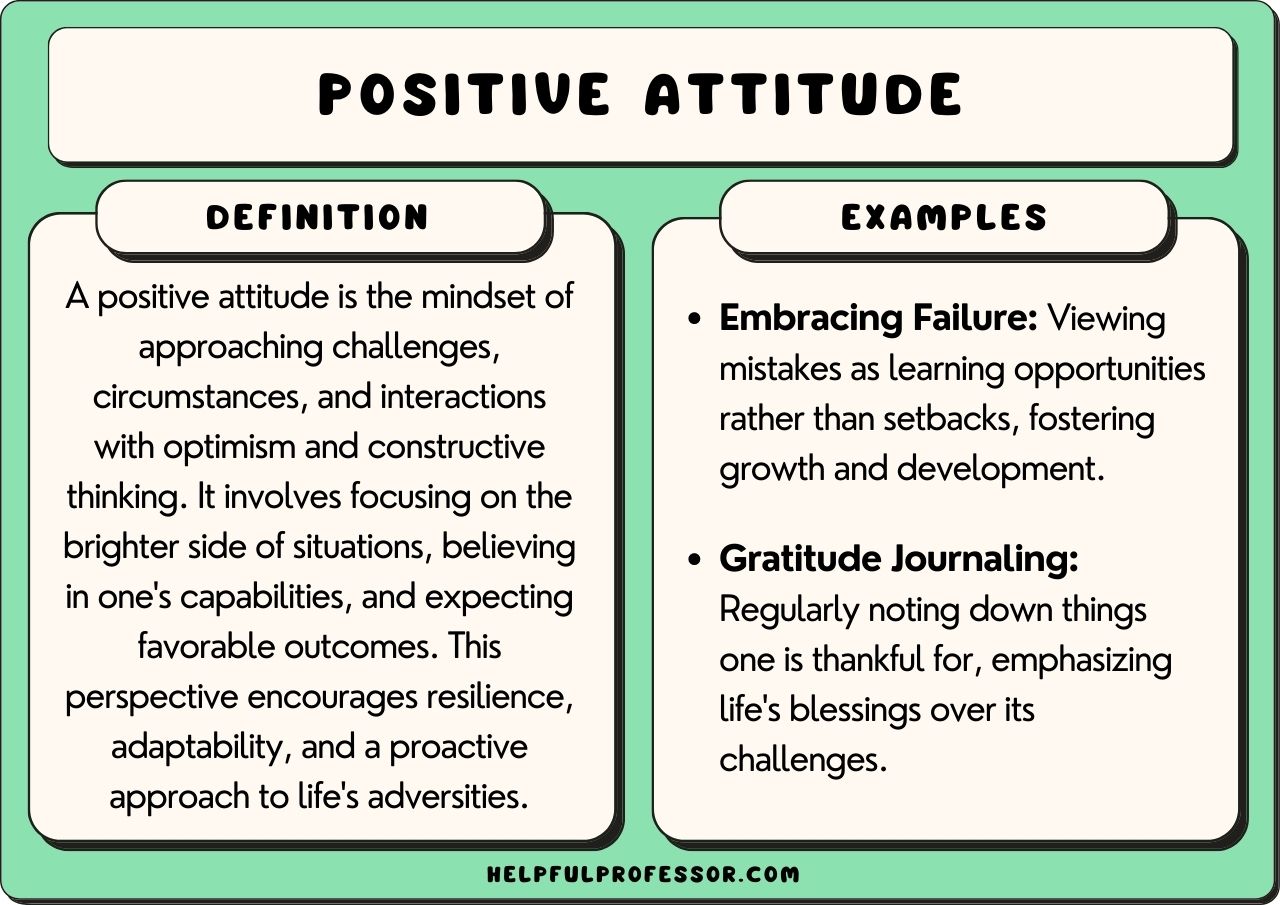

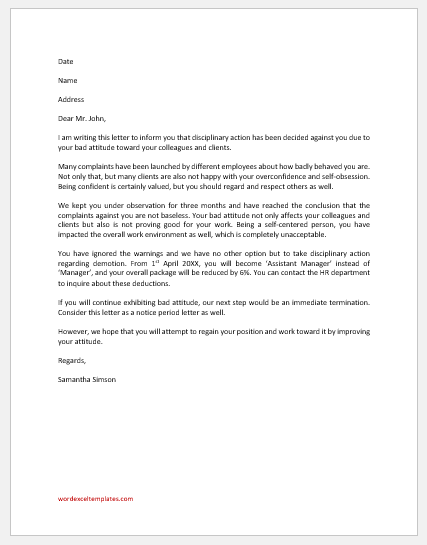
![How To Write Someone Up For Bad Attitude Free Printable Professional Warning Letter Sample [PDF] Employee](https://www.typecalendar.com/wp-content/uploads/2023/05/bad-attitude-employee-warning-letter.jpg)
